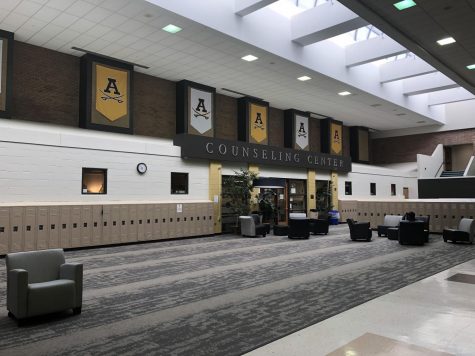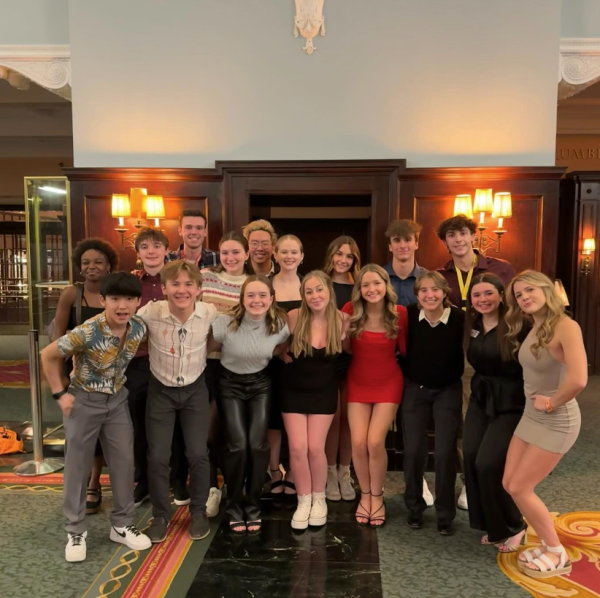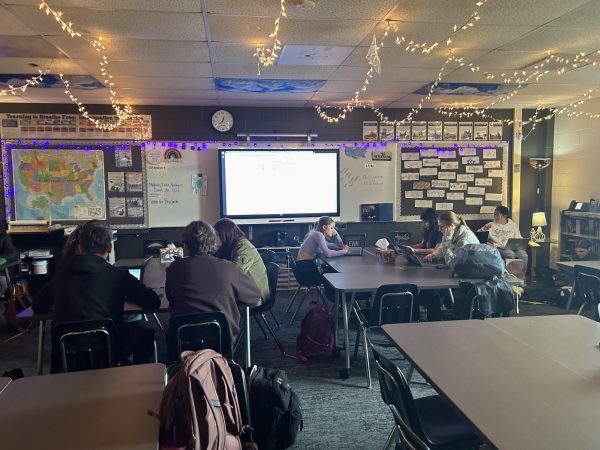High School Scheduling: Freedom to Choose

Screenshot of RCS Synergy Program by Kristen D’Souza
Scheduling page on RCS Synergy Program.
It’s that time of year again: students are lined up at teachers’ desks, colored scheduling cardstocks in hand, waiting to be greenlit by ink signatures. Their goal? To create the most academically rigorous, balanced, stimulating schedule they can–within the six class hours of a school day.
For many students, class selections can be a precarious balancing act: life begins after sports, clubs, and a healthy homework load. The pressure of scheduling season often boils down to creating a balance between challenging courses and personal strengths.
AP Classes:
A conversation on high school scheduling isn’t complete without a mention of the College Board: the education and assessment giant that dominates so much of students’ high school academic career. Adams already offers a mix of academic and elective courses; the combination of classes that students take often varies based on their grade. For example, most freshmen aren’t given the option of taking Advanced Placement (AP) courses. Even by sophomore year, there are few AP classes directly offered to underclassmen, nor are they a priority in scheduling for high-demand AP courses. Their choices are limited to classes like AP U.S. History and AP Seminar, which don’t require any prerequisite courses to be taken. The result is that many students fill their junior and senior year schedules with as many AP courses as they can manage: some students’ AP total ends up in the double-digits by the end of their high school career.
It’s not uncommon for students to select AP classes for status, rather than genuine interest in the subject matter. Some students believe their chances of getting into college will be increased by demonstrating academic rigor.
“College apps…A culmination of interest and leverage for applying to college,” said junior Sarrah Ahmed, when asked for the primary reason for taking AP classes.
This quantity-over-quality approach is even encouraged by the College Board: the Rochester Community Schools district was recently named to the national “AP Honor Roll” due to the increase in students taking AP exams and earning a score of 3 or higher, with 3,310 exams taken by RCS students in May 2018.
Still, some see the merit in an increased depth of study and the college credit offered in exchange for a good score on AP tests.
“My decision to take AP classes was largely motivated by academic interest, but I’d say around a third of them are classes I’ve taken primarily so I won’t have to take the class once I go to university,” said an anonymous junior.
In addition, some students prefer the curriculum and setting of an academically-challenging course.
“(AP Classes are) actually just a more interesting environment than regular classes,” said senior Mandy Purcell.
Alternative Schedules:
There also exist options for Adams’ students who want to pursue a more personalized schedule outside of the core curriculum. The school offers courses that take students outside of the traditional classroom, in more ways than one.
Blended classes, like Myths and Advanced Multimedia Communications, allow students to work remotely on one or more days of the week. Students can opt to be in a space that best aligns with their working style, whether that be the Adams’ media center or their desk at home. Blended classes are a viable option for students who find the school environment stifling, but they are not a free hour; students must be willing to put in independent work outside of the classroom if there are assignments due. Further, most teachers require that students are present in class for at least part of the week.

The Adams Counseling Center, located within the Senior Area.
In recent years, Adams has also started offering online classes through the platforms e2020 and Michigan Virtual. Online instruction shares all the familiar hallmarks of traditional classes–weekly assignments, due dates, assessments, and course grades–but the virtual education is done on a computer, instead of at a desk. The grading policies of each class differ; as each is led by an instructor qualified to teach the subject. These instructors are real people who create lesson plans and grade assignments remotely, leaving feedback for students in the form of online commentary. RCS students are typically placed in a class of students from other districts working online from all over the state of Michigan, but will work independently to complete the assignments. Students who take online classes are given the option to work on school computers or bring their own laptops. Additionally, online classes are technically blended, so students aren’t required to report to a specific place to take their class, unless they are behind.
Students can also opt to learn technical skills by attending Oakland Schools Technical Campuses for half the day. Among some of the available programs are culinary arts, cosmetology, and computer programming, and students gain hands-on experience with trade skills. According to the OSTC website, the program is geared towards high school students who are interested in closing out their four years with career certifications and on-the-job work experience. OSTC students take their course pathway for 3 hours, then come to Adams to take 3 academic hours. Students interested in being a part of the OSTC program are required to fill out an application affirming their interest, which can be found in the counseling office.
Fairly new to Adams is the option of being a peer mentor for 1 hour of the day; students have the opportunity to assist with special needs classes and guide their peers through daily activities, as well as completing self-guided coursework. Students will learn how to welcome and and accommodate for peers who need additional help in school, and may be a mentor for students with emotional impairments, on the Autism spectrum, or who need academic support. Students who wish to be mentors will need to fill out a Google form describing strengths they believe will make them a good fit for the peer mentor program, including patience, willingness to step out of comfort zone, strong communication skills, and maturity.
Looking Back
Upperclassmen at Adams have experience with scheduling, and many of their schedules reflect a trial-and-error process of discovering interests and strengths. It’s rare for students to be placed into every class they originally asked for, and for this reason, many students are placed in their alternate choices.
“Creative writing is one the classes that I was kind of just thrown into, but it ended up being one of my favorite classes that I’ve ever taken at Adams,” said junior Josie Wenzell.
Wenzell especially remembers the journal-keeping that was part of the class, noting how she has found a creative, therapeutic outlet through documenting her daily life because of the class.
Students who are unsure of whether they will be interested in a class might be pleasantly surprised by taking a chance on a last-minute schedule change. In these four years before Adams students head their separate ways, either to college or employment, they just may discover a lifelong passion.






